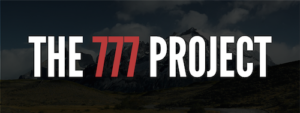This is the second of 3 posts on The Renaissance Man’s Guide To Maintaining Momentum While Doing Everything. You can read part 1 here.
Making The Shift
Ah, implementation, always the hardest part. Let’s jump right in.
Remember from last time that shifting tasks is like shifting gears in a manual car. Once you got it, it’s no problem, you keep your momentum and you can go even faster. But, if you screw it up, you’ll jack up your gearshift, make a lot of unpleasant noise and stall out your engine. So let’s not screw it up!
Shift Less
The quickest way to make shifting easier is to do less of it. Say I have three goals: A, B, and C.
- Goal A = Get X number of hits to the Blog of Impossible Things
- Goal B = Build a successful side business in my spare time
- Goal C = Run a Half Ironman sometime next year
Each goal has their own set of things that need to happen in order to accomplish it. Things that need to be done right now, things that need to be done soon, and things that need to be done in the near future. Instead of focusing on the 27 different tasks that need to be done for each individual task, I start to block them together based on time & goal. You can see a visualization of this below.
This lets me see everything at once, but it also lets you see what tasks go together and what things have to be done now versus the things that have to be done later. It also lets me see which tasks need to be done to achieve each goal.
Block It Up, Man
Once, I get this organized, I prefer to attack the tasks in blocks based on my goals. So for example, I’d start with task 1,2 & 3. When I’m doing with that I’ll do 4 & 5 and then move on to 6, 7, 8, & 9. This way even if I only get to task 7, I’ve still finished off the RIGHT NOW stages for Goal A and Goal B and can move on to the soon tasks for both of those goals.
I could just do task 1 & 2 then skip to 4, and then skipped to 7, 8 & 9, but if I did that, I’d still end up with things to do in the soon category from each goal, I’d see less progress overall and I wouldn’t move forward.
Get it done, cross it off your list and then move on to the next project.
Create Less Friction
Answer the questions you know the answer to and then come back to the ones you skipped if you have time.
Every test I took from Kindergarten to College, I got that test-taking advice. You know what? It works. I actually took the advice, used it and aced a bunch of tests by doing just that (see, not everything they teach you in school is bad).
So what does that have to do with shifting between tasks? Take that advice, but instead of referring to test taking, we’ll apply it to doing tasks. When switching between tasks do the thing that causes less friction. In other words, do the things that are easy right away and come back to the harder ones later.
If switching to one task creates a lot of friction, do something else. That doesn’t mean forget about it entirely, you should come back to it later, but don’t be afraid to pass on something that causes a lot of friction. You won’t hear me say this often, but this is one of the times you should take the path of least resistance.
For example, if I’m working on Goal A, my blog, a lot of the tasks will involve writing. If I finish up the right now portion of my blog goals, and am on a roll writing, I might go right to the writing portion of Goal B, working on my business site, and keep writing, since I’m in a groove.
However, if I’m slogging through a blog post that’s hard to write and after finally finish it after spending too much time on it and find myself completely exhausted, I might take a break, go for a run, swim some laps or hit the gym to get me to closer to goal C and take my mind of off writing.
Remember, none of these are mindless tasks, but things that are actively moving me closer to my goals. I’m just making better use of my time and actions by acting intentionally.
Keep it moving
Remember the point here is to keep things moving and to keep doing things. Once you stop, it gets much harder to start back up again. You begin to stagnate and you’ll start rationalizing your inaction.
Stay tuned for pt. 3 next Tuesday, where we’ll wrap it all up.




One of the ways I handle the tough stuff is to make myself do first the task I dread the most, because once that’s done everything else looks easier. It doesn’t always work that way, sometimes that creates a whole lot of resistance and I get nothing done. But combine that with the idea of doing the easy things first to get momentum started and I think you’ve got a way to get it going either when you’ve got great fun stuff, or when you’ve got some not fun but necessary stuff.
Very helpful, that is. I probably already knew this, but it helps a lot to have it clearly written out like that.
You’re welcome Kaari.
I think the method you’re talking about is called “eating the frog” – I haven’t read it, but I’ve heard a lot about the book.
Hey Joel
This is really good advice, the process you describe here seems very much intuitive, but putting it out in writing makes it a lot clearer to see. I definitely agree keeping up that momentum is key. I’ve had times where I would start something I didn’t have planned and just keep going with it. This happens a lot with cleaning the apt too.
Joel vs. Cleaning is always an epic battle. I usually lose 🙁
The spreadsheet-block also provides a great visual overview to keep oneself on track. Nice.
Glad you liked it!
p.s. just check out your site. I’m intrigued.
Cool. Nice one Joel. I liked your goal achievement visualisation chart. Don’t think I’ve seen one quite like that before, and I’m a recovering productivity junkie. I think there are two distinct types of tasks: the habitual, do-it-every-day type of tasks; and the progressive, one-small-step-towards-your-goal type of tasks. The system you’re talking about is probably more to do with that latter group. Interested in knowing how you balance the two.
Yes. Score +1 for new visualization charts!
You’re right about me focusing on the “steps-toward-your-goals” oriented tasks. I find the time for both, but focus on trying to make habitual tasks as meaningful as possible. (maybe that’s an idea for an addendum) =)
Neat post. It really is possible to have several projects on the go and make daily progress with all of them.
As they say, “a change is as good as a rest”, so keeping 3 major projects rolling is a great way to add variety to life.
To make one of the goals a health/fitness one, and the other two ‘brain/business’ goals, is a great way to ensure you stay fit, and secure your business as well.
Most of my clients focus exclusively on the business/profession goal, with just one or two hours a week of health/fitness with me. I encourage them to expand the health/fitness side, which will also make them more productive on the business side.
It’s a win win! Keep up the great posts Joel.
I actually have more than 3 going on, but 3 is a lot easier to explain :). Glad you liked ’em Dom.
Good ideas Joel! I find myself becoming overwhelmed when I take on too many things.
Thanks for stopping by Omar. The key is in taking on the right things. Best of luck!